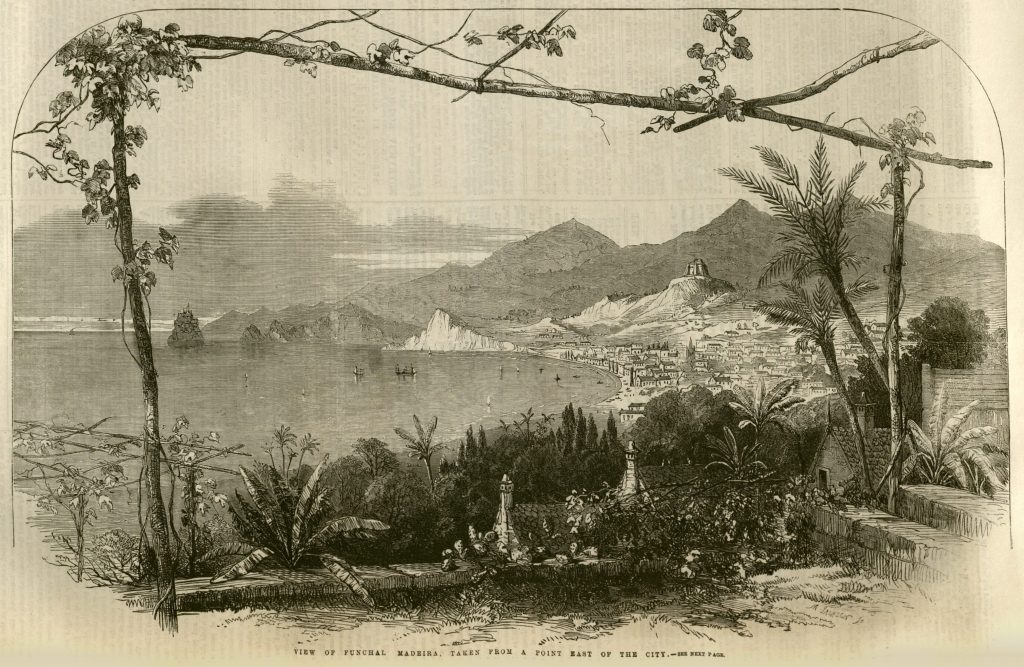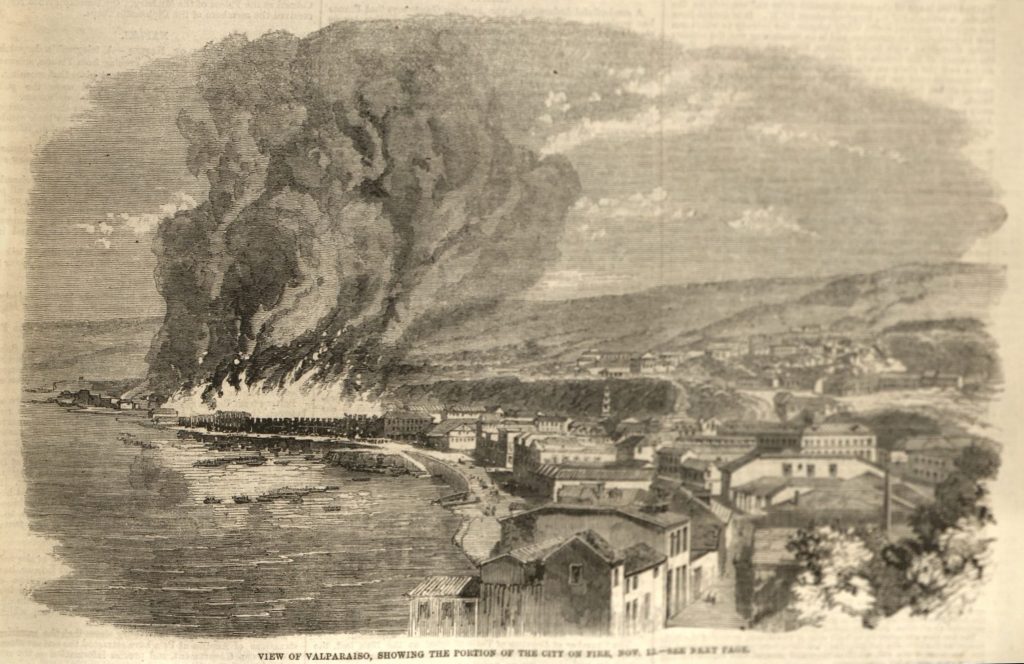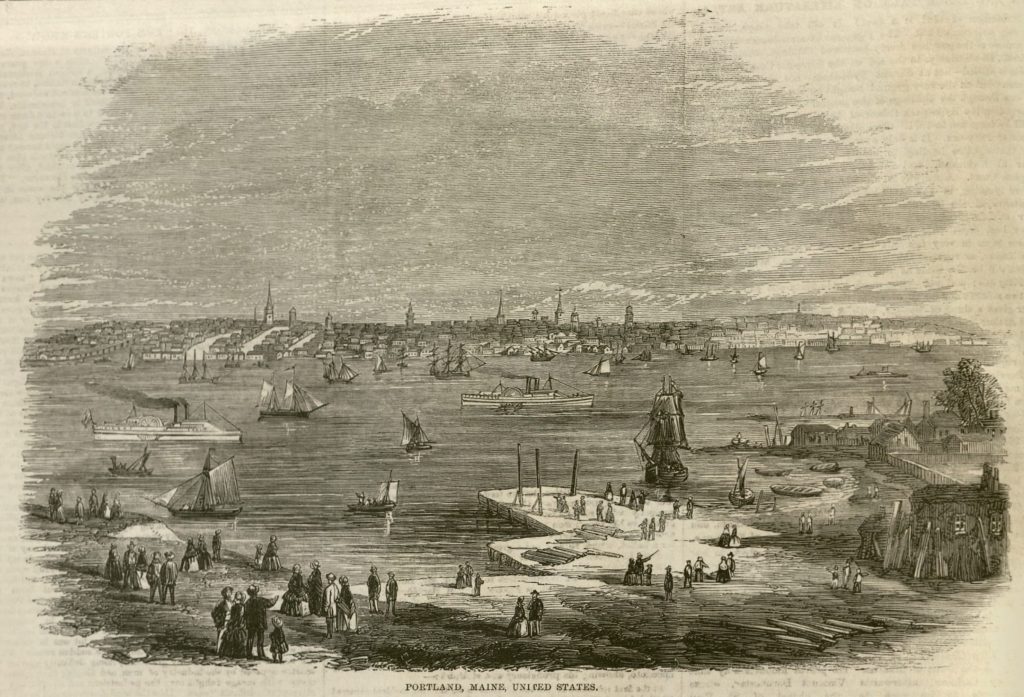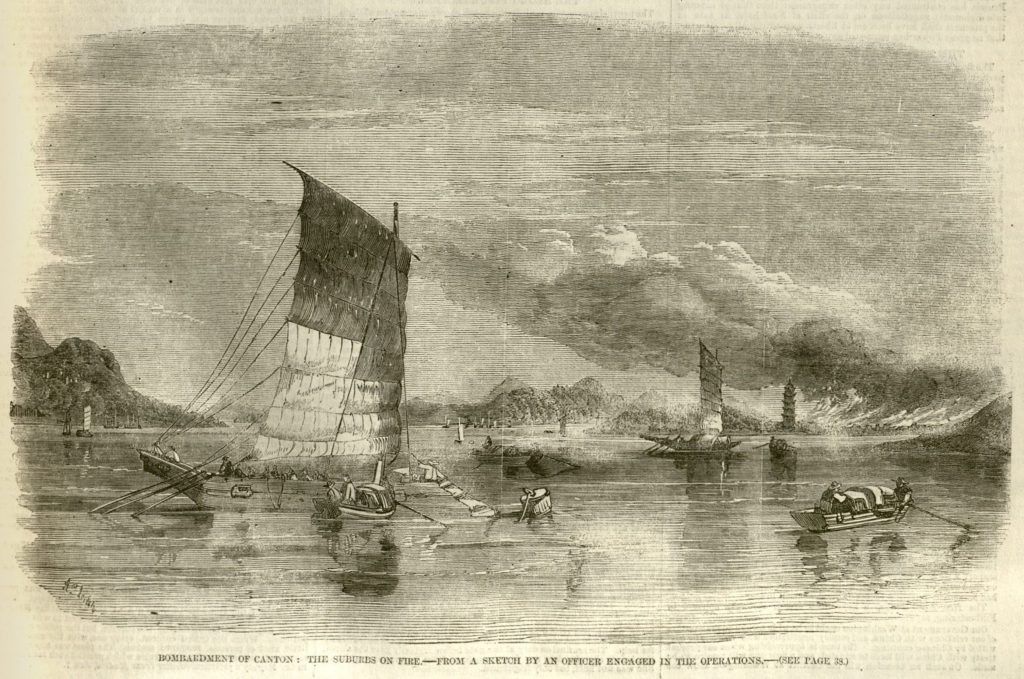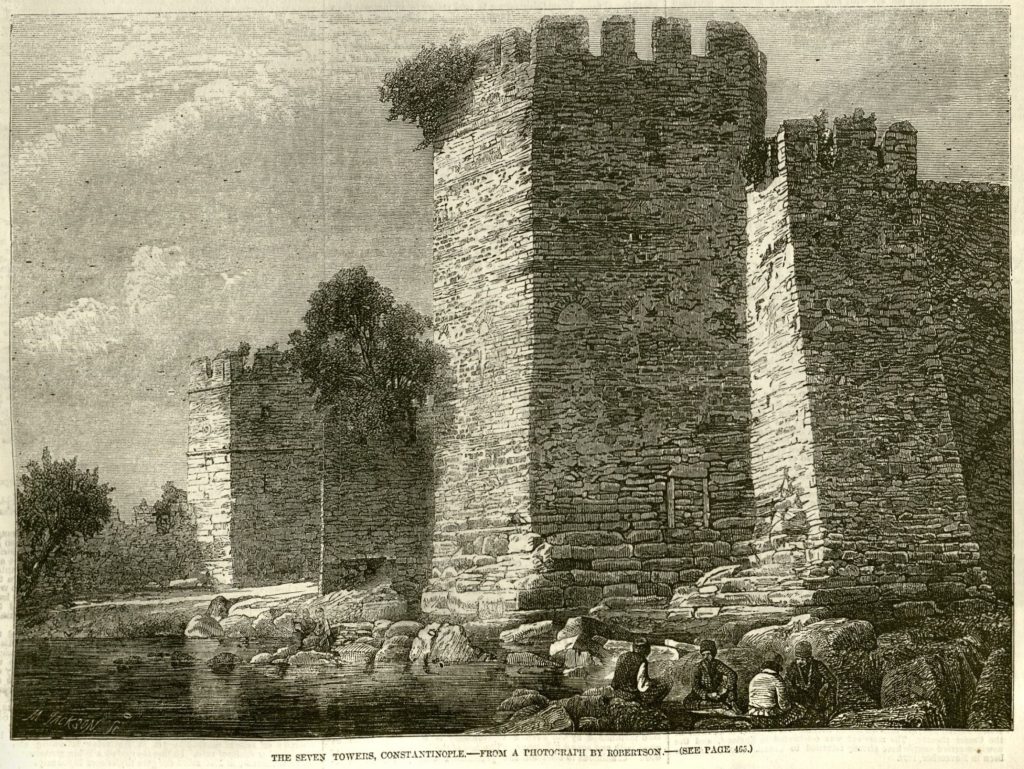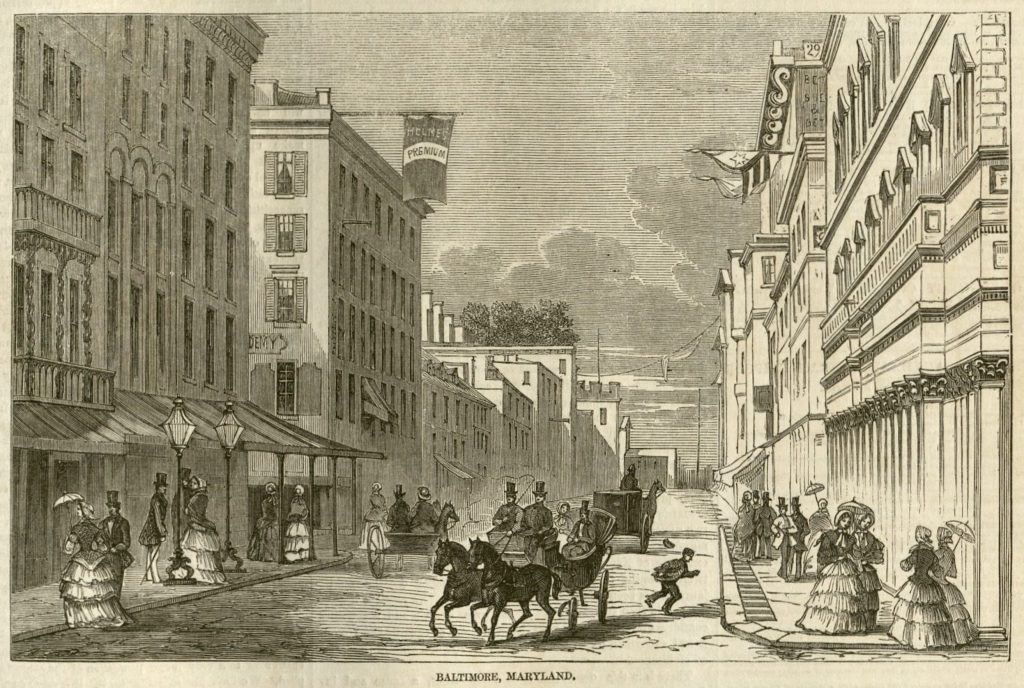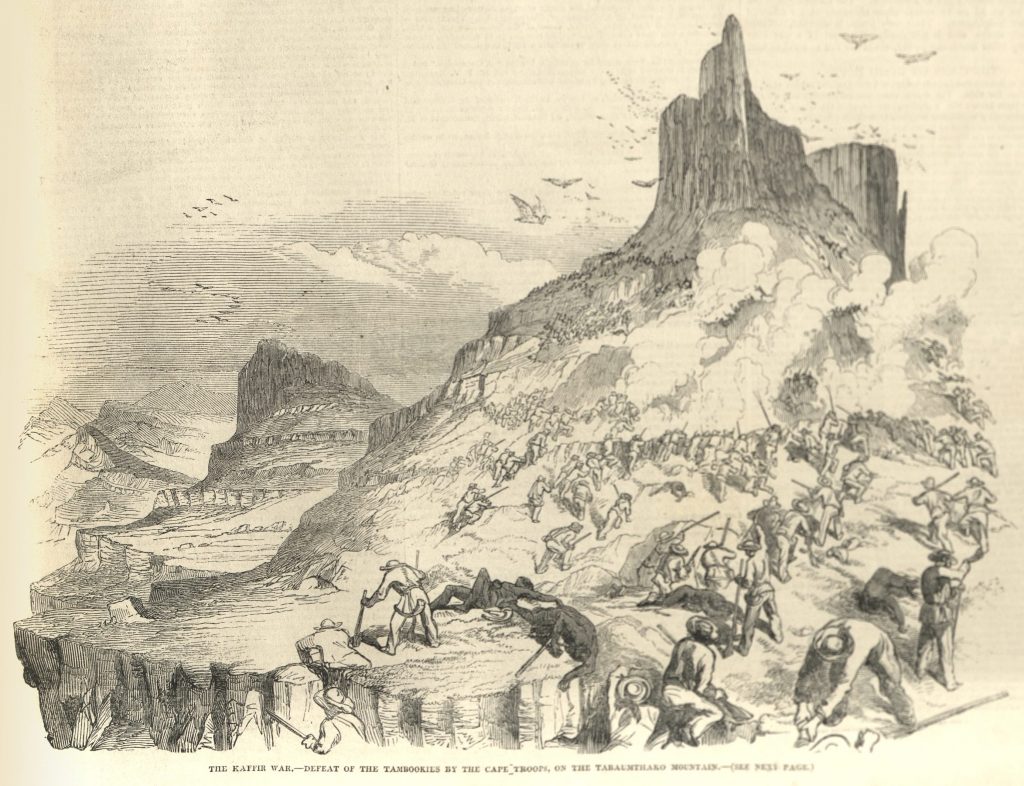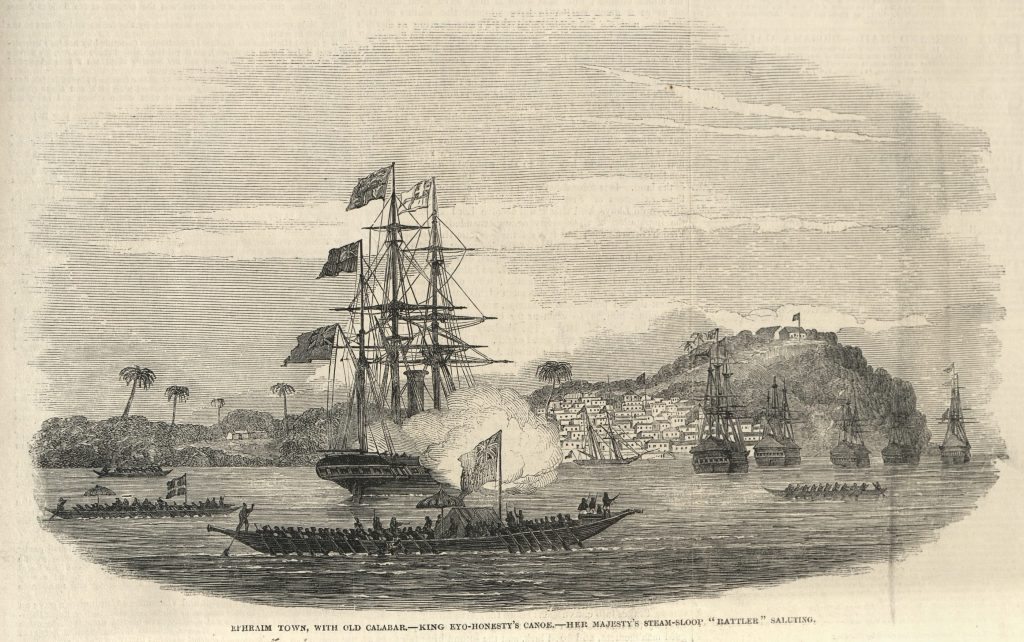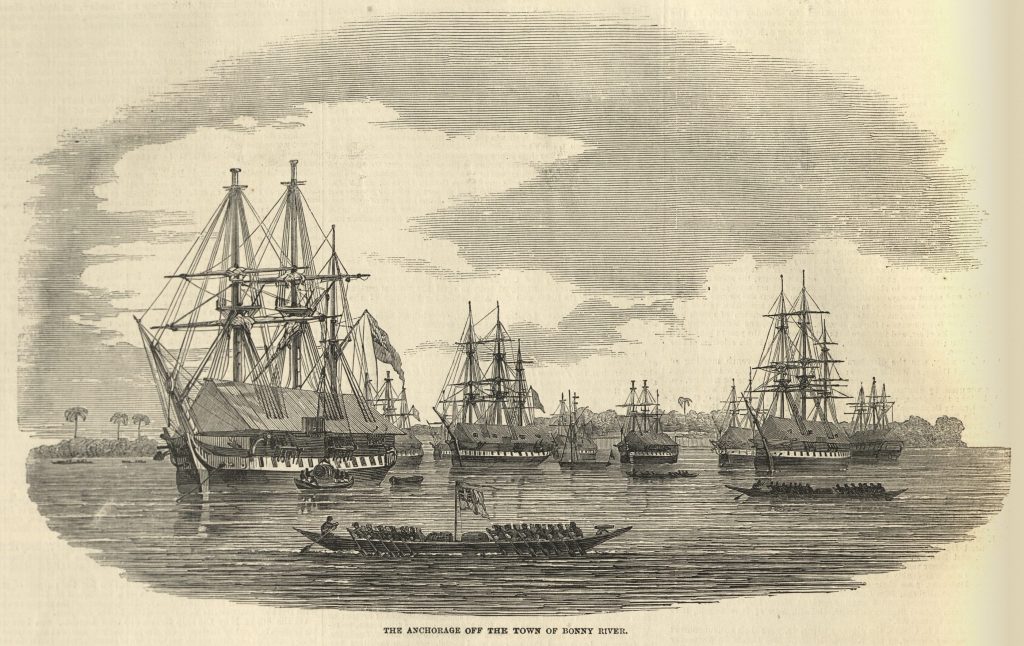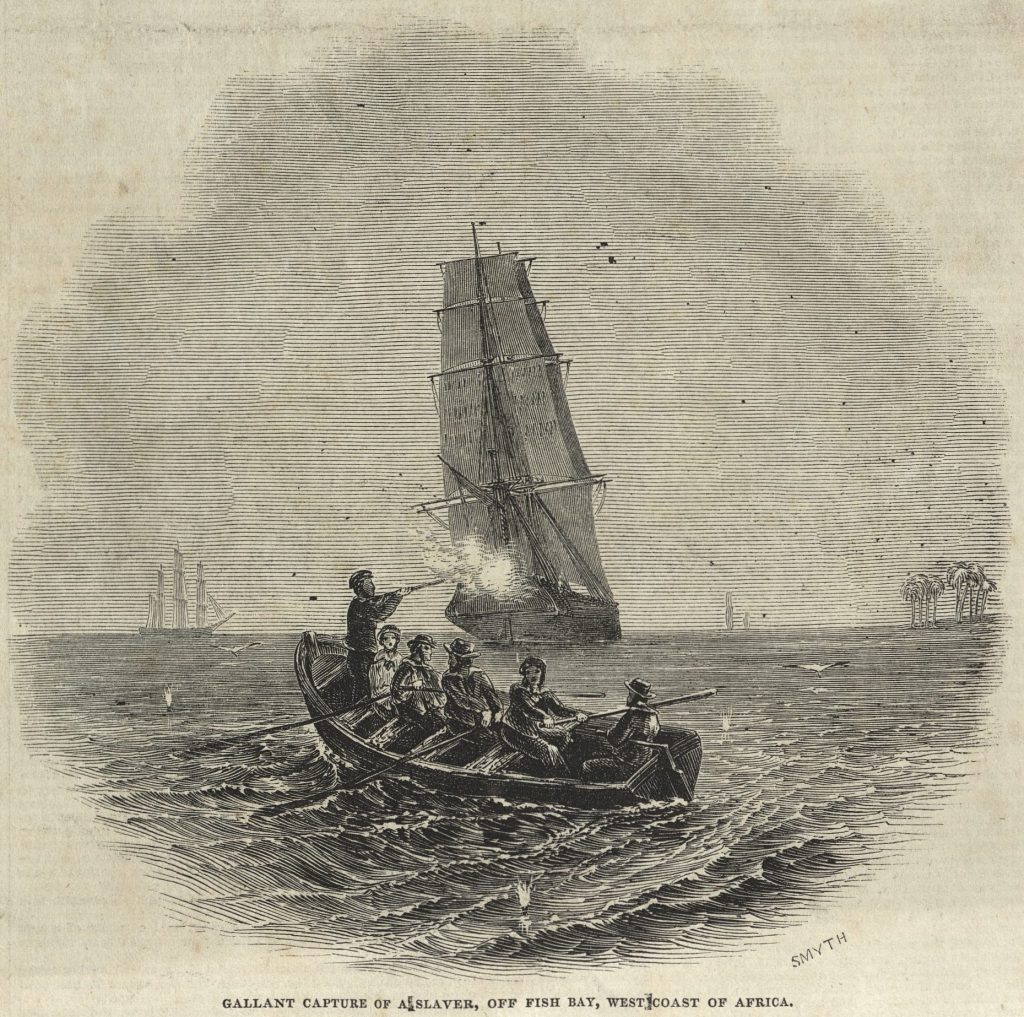Madeira was originally a center of slavery and was also a stop on the slave-trading routes. It was a port of call for not only for slavers but also for naval ships who worked to suppress the slave trade. The Illustrated London News, 22 January 1859. Courtesy of University of Missouri Libraries.
Read More
Chile had signed treaties with the British empire to assist them in the suppression of the slave trade. Valparaiso is also known for having the continent’s first volunteer fire department which must have come in handy when a portion of the city was set ablaze in 1859. Valparaiso would later be nicknamed the “Jewel of […]
Read More
Portland, Maine was known for shipping out Southern slave-grown cotton to the rest of the world. The suppression of the slave trade may have prevented new slaves from coming to the United States but it did not thwart thriving industry of Southern slave-grown cotton. The Illustrated London News, 1 January 1859. Courtesy of University of […]
Read More
The Bombardment of Canton was one of the opening campaigns of the Second Opium War. This was an effort on the part of the British to open Chinese markets to foreign trade, including trade in opium, which the Chinese Government was trying to suppress. The Illustrated London News, 17 January 1857. Courtesy of University of […]
Read More
The British Foreign Office’s correspondence on the suppression of the slave trade extended as far as the Ottoman capital of Istanbul, formerly known as Constantinople. The Illustrated London News, 8 November 1856. Courtesy of University of Missouri Libraries.
Read More
At the crossroads of the slaveholding south and the largely free north, Baltimore emerged as an Industrial city that captured both potentialities of a slave-holding city and a free, industrial city. The Illustrated London News, 27 September 1856. Courtesy of University of Missouri Libraries.
Read More
The British engaged in multiple wars with the Xhosa in South Africa. This battle was one of the most decisive Xhosa defeats. Although slavery had been abolished in South Africa, some of the British settlers were reintroducting elements of labor coercion, as they gained more control over the native population. The Illustrated London News, 13 […]
Read More
Old Calabar was an important port of slave embarkation in the Bight of Benin, present-day Nigeria. The image shows the town of Ephraim, near Old Calabar, located in the background, with H.M.S. Rattler saluting King Eyo Honesty. The Illustrated London News, 22 June 1850. Courtesy of University of Missouri Libraries.
Read More
Bonny River, near the delta of the Niger River in present-day Nigeria, was a major point of slave embarkation. No wonder British man of war would frequently visit the river. The following image shows the anchorage off the town of Bonny River, with British and othe ships laying on the harbor. The Illustrated London News, […]
Read More
As the suppression campaign progressed, slave traders sought new points of embarkation along the coast of Africa. The more hidden and discreet they were, the better for them. Fish Bay, in present-day Angola, is an example of such points. It was located in a remote region, but not too far from previous and more important […]
Read More

